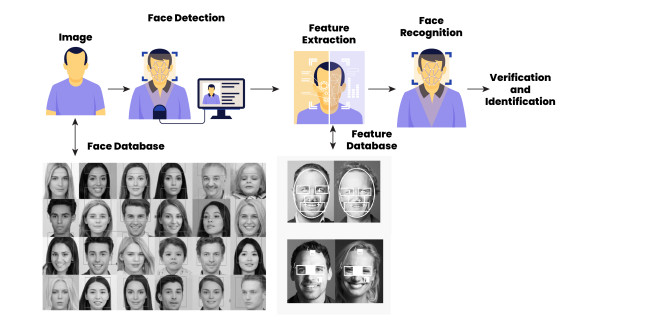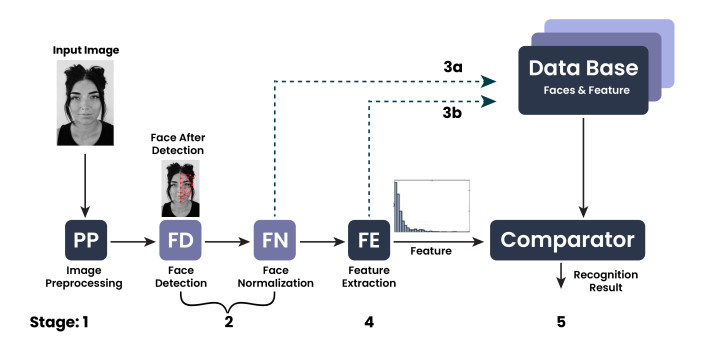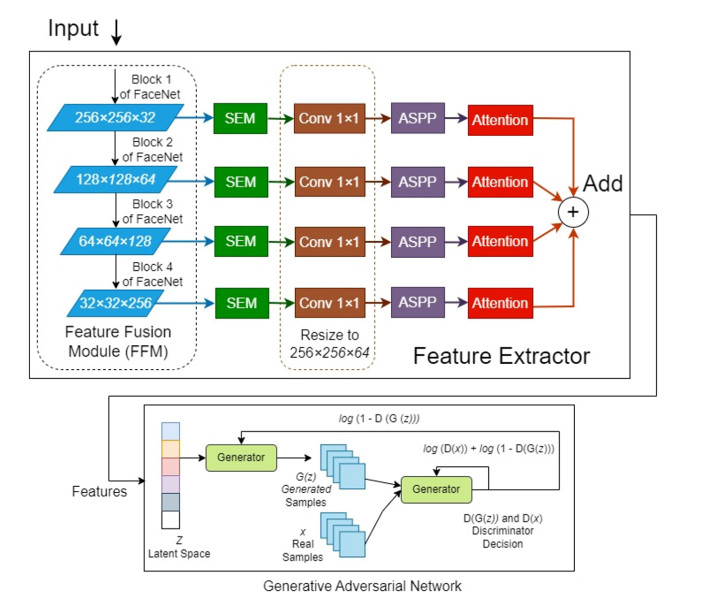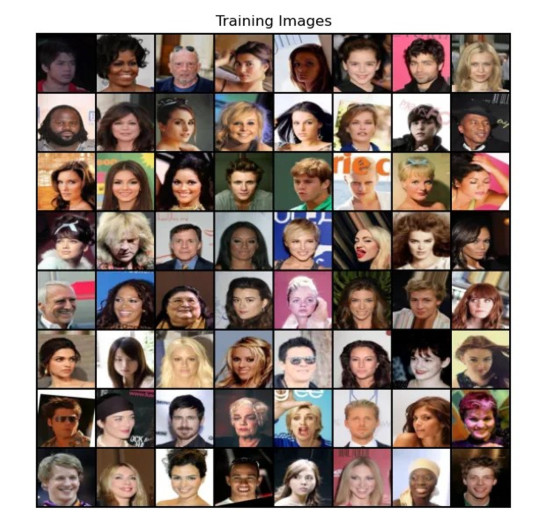1.
Introduction
The only difference between a computer virus and other programs on a computer is that viruses are not helpful. It is a dangerous program that was created to carry out destructive deeds like wiping data or harming other software in the computer system [1].
The earliest viruses to be introduced were for technological purposes alone. Instead of harming or attacking, the purpose of these algorithms was to determine the propagation time. These viruses were created for research and useful purposes. Creeper's goal was to create a malicious mobile application. Ross and Hamer introduced the mathematical models of communicable illnesses in the 20th century. Bernoulli first proposed the idea of disease dynamics and its mathematical modeling in the year 1766, which opened the door to modern epidemiology. To examine the dynamics of the sickness, they took into account the law of mass action. Following the same path, Frost and Reed Frost created the infectious illness model, which explains how susceptible, infected, and recovered people are related. The smoking model has recently drawn the attention of researchers among other models.
Smoking poses a serious risk to one's health because it directly or indirectly affects every organ of the body. Scientists face a difficult problem when it comes to mathematical modeling of biological sciences [2,3,4,5]. The relationship between mathematical modeling of the physical problem is that, whereas biological systems discuss changes in structure, nonlinear terms, and multi-scale issues in the mathematical modeling for the interrelationship of the parameters, complex systems discuss change in structure in the systems [6]. Using traditional integer order derivatives, numerous biological models were thoroughly examined in the final decades of the 20th century. See for more information [7]. The dynamical features of numerous physical systems can be better understood via fractional derivative. These differential operators are noteworthy because, in contrast to traditional differential operators, they exhibit non-local behavior. The memory effect is one of the fundamental characteristics of fractional differential equations. In fact, the physical model can be developed using a realistic and useful technique using fractional order derivatives. Higher degrees of freedom in physical models are provided via the fractional order derivative's property. Powerful tools for determining the dynamical properties of diverse biomaterials and systems include arbitrary real or complex order derivatives. These models' global (nonlocal) features are their most well-known characteristic. Magin looked on the relationship between stress and strain in biomaterials using fractional order derivatives in the model [8].
For a clear understanding of the phenomenon, fractional-order derivatives are used in the modeling of the intricate biological system patterns. The memory effect of fractional models enables more information to be gleaned from the past, improving the accuracy of the dynamics forecasts. Depending on the virus's characteristics, many researchers created numerous compartmental models to explain the dynamics of the virus. For instance, SEIAR stands for Susceptible, Exposed, Infected, Asymptomatic, and Recovered. Other acronyms for this condition include SI (Susceptible-Infected), SIS (Susceptible, Infected, and Susceptible), SIR (Susceptible, Infected and Recovered), SEIR (Susceptible, Exposed, Infected, and Recovered), SEIQR (Susceptible, Exposed, Infected, Quarantine and Recovered).
SLB (Susceptible, Latent and Breakout), SLBS (Susceptible, Latent, Breakout and Susceptible), SLBRS (Susceptible, Latent, Breakout, Recovered and Susceptible), and SEIS are among the models of computer viruses that are often employed (Susceptible, Exposed, Infected and Susceptible) Since the state variables in these models indicate the number of individuals (whether they be humans or computers), their values must not be negative. As a result, non negative is a key characteristic of these state variables. Additionally, the total population of the model's subpopulations must not exceed the model's overall population.
Computer viruses include worms, Trojan horses, ransomware, spyware, adware, and scareware, to name a few. In 1949, John von Neumann is credited as being the first scientist to propose the idea of a self-replicating computer program. The Theory of Self-Reproducing Automata is the name given to his published work. As the theoretical founder of computer virology, von Neumann is credited with creating the first computer virus, a self-replicating computer program [9]. Kraus [10] postulated that computer instructions could behave like biological viruses in 1980. The first virus discovered on ARPANET, the initial internet, was called Creeper Malware [11]. Before the advent of computer networks, information and programs were exchanged using portable devices such floppies, discs, magnetic tapes, and magnetic drums. In the 1980s, conventional computer viruses first arose. The dynamics of the first computer virus model for malware programs were created in 1991. This style was influenced by the work of Kermack and Mc Kendrick [12]. Later, many computer virus models that took into account the dynamics of the virus's control parameters were created. Antivirus software is being accumulated in computer libraries using the traditional methods. On the other hand, researchers are drawn to the macroscopic approach to viral dynamics. The first researchers to examine computer virus models based on biological infections were Kepler and White [13]. Many dynamical models of internet viruses have been constructed along the same lines. According to the connectivity of the computers, these models can be divided into two primary types, namely heterogeneous models and homogeneous models. More academics are currently researching heterogeneous computer virus models. By taking into account real data, Kjaergaard and his co-authors examined the SI, or susceptible-infected, model for the computer virus dynamics with regard to time [14]. In order to elaborate the model, Castellano and Pastor-Satorras established the power law and described the fundamental models in saturated net works using SIS, susceptible-infected and susceptible models. A brand-new computer virus SIS model with a nonlinear rate of infectivity was created by Zhu and his co-authors. They thought about the edges and nodes' inclusion and expiration [16]. By taking into account the power law degree distribution of the internet, Yang and his colleagues created a new epidemic system for computer viruses and looked into the critical value for the dynamics of the virus. On the basis of decreased scale-free networking, a computer virus model was created [17].
There are many viruses that can communicate without topology, including Conficker (2004), Witty (2004), Blaster (2003), Slammer (2003), and Code Red (2001). These programs have the potential to harm the expensive machine by exploring the entire IPv4 space or local IP addresses. The network-spreading virus in this instance can be regarded as fully connected. Furthermore, according to references [34,35], virtual clusters are a form of interconnected network. Another recent development in the field of dynamical models of computer viruses is the study of homogeneous systems. A subset of compromised computer nodes may end up on the internet and on portable devices that contain viruses. Gan et al. [20] created a collection of physical viral systems. Amador and Astalejo investigated how computer malware spread by taking into consideration the stochastic SIRS system, in which immune modes send out alerts to slow the spread of viruses across computers [21]. Liu and Zhong looked at a compartment model known as the SDIRS model representing malware communication under the homogeneity restriction [22]. For the purpose of analyzing the various physical behaviors of network virus propagation, Yuan et al. [23] described the SEIR model with a function of non-linear infection. This article offers a new computer malware communication method for researching the variables that affect the dynamics of computer viruses on networking. There are several globally asymptotically stable sites of equilibria of the continuous model, according to a thorough analysis of this system. In addition, various computer simulation tests are run to examine the results of this system. Finally, certain crucial steps to manage the dynamics of the infection are recommended. Non-linear integer order models can be solved using a variety of techniques, including the Adomian decomposition approach and the Homotopy perturbation method. It is an analytical approach that has been suggested for solving nonlinear problems with numerical analytic series. He developed this technology [24]. There are no set universal principles for higher order systems, though. Computer malware programs are extremely risky for consumers. Once a node in a network is infected, it is difficult to keep the virus under control. Cohan described computer viruses and looked at how they might destroy computer systems on a large scale [25].
Kephart et al. [26,27] used a human infection model to study the spread of computer viruses. A computer infection model with homogenous mixing properties was created by Mishra et al. [28,29]. In order to anticipate whether a virus would exist, they first gave the threshold value for the dynamics of computer viruses in the population of computers. See [31,32] for more information.
Now that studies have shown that traditional models do not accurately capture occurrences in the real world. They do not completely address the model's dynamics. These models also yield significant error since they do not accurately reflect the actual data [35]. As a result, for a variety of reasons, it becomes necessary to build fractional order models for nonlinear dynamical systems. These models have the system's historical memory as well as the inheritance property, and they fit real data more closely. The models' use of fractional order derivatives to establish a class of differential operators. Because the order of the fractional derivatives can take on infinite values across an interval, the fractional order models represent a class of systems.
Finding the necessary approximations using a fresh numerical design is a difficult undertaking. Because one of the fundamental prerequisites for population dynamics is numerical solutions with great precision. The population of the various categories is characterized by the state variables used in these models. Therefore, at any point in time, these variables cannot have negative values [33,37]. Masood and colleagues looked into the fractional dynamics of the spread of the stuxnet virus in industrial control systems. They demonstrated that the primary cause of worm spread in isolated networks is removable storage devices [38].
Muhkdasai and coauthors used supervised neural networks to take into account the impact of stochastic processes as they worked on numerical simulations for the fractional order Leptospirosis epidemic model. The fractional order model is studied using the Levenberg-Marquardt backward technique [39]. In a similar vein, Sabir et al. [40] looked at the stochastic variables and artificial neuron networks in the nonlinear fractional order prey predator model. The mean square error is reduced by combining the scaled conjugate gradient with the artificial neural network strategy. The fractional food supply model was mathematically explored by Souayeh [41] by incorporating the stochastic factor. The underlying model takes into account the three groups of populations: common prey, top predators, and specific categories of predators. The SCGNN was created to produce more accurate and superior results. On the basis of a mathematical model of the disease with a fractional order, Sabir and coauthors investigated the dynamics of the breast cancer disease. During the chemotherapy process, the tumor concentration was taken into account. For the fractional order model, four different compartment types are taken into consideration. Normal cell population, malignant cell population, immunological reaction class, and estrogen compartment are the compartments covered in the model. The numerical efficiency of the numerical design has become very attractive by the inclusion of the stochastic Levenberg-Marquardt back propagation neural networks [42].
In order to obtain the approximate solutions of the fractional order model, Sabir et al. [43] used the LMB numerical scheme. By taking into account the generalized Caputo type fractional derivatives, Kumar and co-authors investigated the new numerical template to solve the fractional differential equations [44]. The existence analysis for these kinds of differential equations was also presented. The existence analysis for these kinds of differential equations was also presented. They also used the technique on some pertinent examples to demonstrate its importance. Following the same path, Kumer et al. investigated the spread of the maize streak virus by taking the fractional order epidemic model into consideration. To arrive at the numerical solutions of the model under consideration, they used the predictor-corrector method. They have demonstrated certain crucial characteristics of the state variables, such as stability, boundedness, and non-negativity [45]. Additionally, Kumer and his co-authors researched the dynamics of dental decay in the general population. They took into account both the epidemic model for integer and fractional orders. For the stability study, the Lypounov and LaSalle's invariance criterion is utilized [46].
The following are this article's significant contributions:
● Stability of the model.
● Construction of robust numerical scheme.
● Positivity of the numerical method.
● Boundedness of the scheme.
● Numerical experiment and simulations.
2.
Preliminaries of fractional calculus
Some basic concepts, definitions, and notations are covered in this section.
2.1. Fractional differential operators
Definition 1. The Riemann-Liouville (RL) integral operator is defined as:
where Γ(⋅) is the famous Euler Gamma function.
Definition 2. The RL differential operator of order α, where m−1<α<m, m∈Z+ is presented as:
where f∈L1[0,b]. Note that the space Lp(X,μ), or Lp(X) or simply Lp consists of all complex valued measurable functions on [0,b] that satisfy:
when p=1 the space L1[0,b] consists of all integrable functions on [0,b]. The most common and initial concept of fractional derivation is the RL fraction. When initial circumstances are taken as RL derivatives, the operator has a few drawbacks.
Definition 3. The Caputo differential operator of any arbitrary order α is defined as:
where α>0, m−1<α<m and m∈Z+.
From the above definition, it is obvious that the fractional order derivative with order α, at time t is a non local operator. It depends upon the overall outcomes of the classically applied mth order derivatives, with m∈Z+ in the interval [0,t]. Therefore, this operator is useful in describing the change of a system in which the past state of the system imparts a critical role. In this article, we focus on the systems (2.1)–(2.3) by taking into account the growth rates of each state variables. The rates not only depend instantly upon the present state but also depend upon the past situation, known as memory effect.
The classical SLBS model [1] for computer virus is given as:
Its fractional order version is presented as:
where S(t)+L(t)+B(t)=1.
3.
Stability
In this section, we discuss the stability of the models (2.4)–(2.6) at equilibrium points. This model has two equilibrium points, virus free state (VFS) ζ0(1,0,0) and virus existence state (VES) ζ∗(S∗,L∗,B∗) and these points are obtained by substituting c0DθtS(t)=0, c0DθtL(t)=0, c0DθtB(t)=0. The reproductive number of the epidemic systems (2.4)–(2.6) are R0=βθ(αθ+γθ+δθ)(αθ+δθ)(γθ+δθ).
Theorem 1. The underlying computer virus epidemic models (2.4)–(2.6) are locally asymptotically stable at ζ0 under the condition R0<1.
Proof. Let
In order to linearize the system we will use Jacobian matrix, for Jacobian matrix,
At ζ0, Jacobian is obtained as:
By evaluating,
We have the eigen values λ=−δθ and (βθ−αθ−δθ−λ)(−γθ−δθ−λ)−αθβθ=0. Now let T=βθ−αθ−δθ, V= −γθ−δθ, W=−αθβθ
This equation can be written as λ2+aλ+b=0, where a,b>0 if RO<1. So, the given system is locally asymptotically stable at ζ0.
Theorem 2. The underlying computer virus epidemic models (2.4)–(2.6) are locally asymptotically stable at ζ∗ under the condition R0>1.
Proof. The Jacobian matrix at ζ∗ is given as,
Let G=−βθS∗(L∗+B∗), H=−βθS∗ I=−βθS∗+γθ K=βθ(L∗+B∗), L=βθS∗−αθ−δθ, M=βθS∗, and N=αθ, U=−γθ−δθ. Now Jacobians will be,
By evaluating,
Which is written as λ3+aλ2+bλ+d=0, where a>0, b>0, d>0 if RO>1. By using Routh Hurwitz of order 3 we will conclude that the given system is locally asymptotically stable at ζ∗ if R0>1.
In order to prove the global stability of the fractional systems (2.4)–(2.6), we present an important lemma which is as follows.
Lemma 3. [36] Let U(t)∈R+ be a continuous function. Then, for any time t≥t0 c0Dθt[U(t)−U∗−U∗lnU(t)U∗]≤(1−U∗U(t))c0DθtU(t). U∗∈R+, for all θ∈(0,1).
Next, in the following theorems, the globally asymptotically stabilities (GAS) of the systems (2.4)–(2.6) at DFE and EE are carried out.
Theorem 4. The underlying computer virus epidemic models (2.4)–(2.6) are globally asymptotically stable (GAS) at ζ0 under the condition R0<1.
Proof. Define a Voltera Lyaponov function as,
and
By using ζ0, we have
By using Lemma 3
c0DθtV<0 if RO<1 and c0DθtV=0 if S=1, L=0, B=0. It concludes that the given system is GAS at ζ0.
Theorem 5. The underlying computer virus epidemic models (2.4)–(2.6) are globally asymptotically stable (GAS) at ζ∗ under the condition R0>1.
Proof.
By using Lemma 3
c0DθtV<0 if RO>1 and c0DθtV=0 if S=S∗, L=L∗, B=B∗. Hence the given system is GAS at ζ∗.
4.
NSFD scheme
In this section, numerical method is presented for the underlying fractional computer virus model. Again, the system of fractional order is given as,
Firstly, Grunwald-Letnikove approach (G. L. Approach) is discussed, for detail see [34].
where ci=(−1)i−1(θi),c1=θ
qi=i−θΓ(1−θ),i=1,2,3,...,n+1.
Now, the following result is helpful in proving some other results.
Lemma 6. The detailed discussion of this lemma can be seen in [34]. Let 0<θ<1 then all the coefficients defined as cθi=−(1)θ−1(θi),qθn+1=hθqθ0(tn+1)=qθ0,−1(n+1)−θ are positive and unveil the property cθi=O(1v1+θ) as i→∞. Moreover, the coefficients cθi and qθi hold the following two relations for i≥1 0<cθi+1<cθi<.....<cθ1=θ<1 0<qθi+1<qθi<......<qθ1=1Γ(1−θ).
By incorporating NSFD rules in the G. L. Approach, the discrete model for susceptible computers becomes as,
Similarly GL-NSFD scheme for latent and breaking out computers as,
Pseudocodes of proposed numerical technique (4.6)–(4.8) are given in Algorithm 1.
5.
Positivity of the scheme
The following theorem validates the positivity of the solution of the systems (2.4)–(2.6).
Theorem 7. Suppose that S0≥0,L0≥0,B0≥0,αθ≥0,γθ≥0,δθ≥0,βθ≥0 then Sn≥0,Ln≥0,Bn≥0 for all n=1,2,3,.....
Proof.
for n=1
for n=2
Suppose that for n=1,2,3,......,n−1,Sn≥0,Ln≥0, and Bn≥0.
Thus for n=n
6.
Boundedness of the scheme
In this section, the following theorem is given which proves that the proposed technique preserves the boundedness of the continuous system.
Theorem 8. Suppose that S0+L0+B0=1,αθ≥0,βθ≥0,γθ≥0,δθ≥0 and (ψ(h))θ≥0 for θ∈[0,1] then Sn,Ln, and Bn are bounded for all n=1,2,3,......n.
Proof.
For n=0
For n=1
For n=2
For n=3
Now suppose that
Where
For n=n
7.
Numerical test and simulations
In this section, we used proposed technique to present the simulations of the underlying computer virus epidemic models (2.4)–(2.6).
7.1. Virus free state
In this section, the simulation behavior of the systems (2.4)–(2.6) was presented at VFS. The values of the parameters involved in the underlying model are δθ=0.1, βθ=0.1, γθ=0.2, αθ=0.3 [1].
The graph in Figure 1 shows that they all converges to the virus free equilibrium state, by using the proposed scheme. Each graph in the Figure 1 is plotted against a suitable selected value of θ i.e., the order of the fractional order derivative, even then the graph converges towards the true equilibrium point E0(1,0,0). More over, the rate of convergence to reach at the VFS is different, which shows the dynamics of the system to reach at the mean position.
All the curved sketches in Figure 2 reflect the graphical solution of L(t), the latent nodes at VFS with four different values of θ (the order of fractional differential order). It may be observed that all the curved lines converge to the virus free state which is zero in this case. Also, the state of convergence of these trajectories is different against each value of θ. This situation implies that the rate of convergence strictly depends upon the value of θ. The rate of convergence of the trajectory is directly proportional to the value of θ i.e., the rate of convergence against the smaller value of θ is slower and vise versa.
The curved graph in Figure 3 provides the strong evidence that the approximate solutions obtained by our proposed scheme are strongly in line with the analytical solution. Moreover, the drawn graphs touch the equilibrium point, which is zero in this case, with the different rates depending upon the order of fractional order derivatives. Also, the graph against θ=0.99 attains the zero (virus free state) earlier than the other three graph with θ=0.89,0.79,0.70.
7.2. Virus existence state
In this section, the simulation behavior of the system (2.4)–(2.6) is presented at VES. The values of the parameters involved in the underlying model are δθ=0.1, βθ=0.6, γθ=0.2, αθ=0.1 [1].
The sketches in Figure 4 are the approximate solution of the state variable S(t) which describes the susceptible nodes in the computer population at virus existence state. The curves validate the fact that the proposed scheme converges to the true steady state, which is zero in the present case. All the graphs in the Figure 4 have the specific rate of convergence to reach at the virus existence position.
The graphs in the Figure 5 show that all the lines converges to the virus free equilibrium for the latent computers. All the curves converge to the true steady state with different rate of convergence according to the value of θ, selected for each curve. The rate of convergence is directly proportional to the value of fractional order θ.
The graphs in Figure 6 indicate that all the curved trajectories drawn with the help of our proposed scheme converge to the exact steady state. The rate of each curved trajectory is different from each other depends upon the selection of θ (the order of fractional differential operator). For smaller value o θ, the rate of convergence is also slower as compared to the lager value of θ.
8.
Conclusions
For a clear understanding of the dynamics of the virus, a traditional compartmental SLBS model for a computer virus was transformed into a non-integer order model in this study. It was demonstrated that the fractional order computer virus model is stable both locally and globally. For the derivatives of fractional order, the GL scheme was used. The fractional order derivative was numerically approximated using the GL technique. The Micken's defined rule was the primary design consideration for the NSFD scheme. In order to solve the non linear dynamical system that represents the dynamics of computer viruses, a hybrid GL NSFD algorithm was created. The model's viral equilibrium and virus free equilibrium stable states were determined. At the viral free equilibrium point, a Jacobian matrix was generated to represent the stability of the numerical method. The scheme's positivity and boundlessness were also determined. Additionally, computer simulations were run to ensure the effectiveness of the numerical design. All of the aforementioned information suggests that the suggested scheme is a solid method that can be used to resolve the nonlinear physical system. In order for the fractional order computer virus model to reach its exact stable state, the projected numerical scheme converges toward it. Additionally, the numerical design ensures a positive and constrained solution, which are crucial aspects of the compartmental model. A kind of drawback of this work is that we were unable to incorporate isolation or quarantine into the model, nor were we able to determine the ideal value of the fractional order parameters θ. The system with delay, diffusion, and advection factors may be solved using this unique numerical design in the future. Additionally, by using the projected numerical method, the fractional order stochastic epidemic and predator-prey models can also be resolved.
Acknowledgments
The authors wish to thank the anonymous reviewers for their invaluable comments and suggestions, all of which led to a substantial improvement of the final work.
Conflict of interest
The authors declare that they have no conflict of interest.










 DownLoad:
DownLoad:











